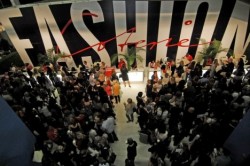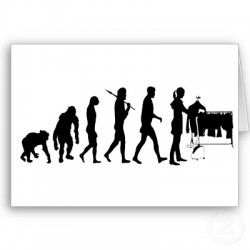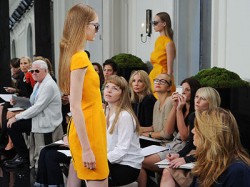We’ve been taught that fashion weeks and trade shows are the backbone of the fashion calendar. They are positioned as the only ways for designers to make a name for themselves in the fashion industry by getting small and large store distribution and driving consumer demand for their product lines.
Sure, there are wholesale buyers looking for new brands to discover and designers to meet and greet at these shows. However, with more and more brands seeking the attention of fewer and fewer buyers, the role of the trade shows is greatly diminished because buyers are basing their decisions on what they like and what sells, not what they saw in booth R35 in a Las Vegas convention center.
It’s naive to think that you can come out of obscurity and all of a sudden rise to notoriety. Getting buyers and editors to fit in one more show is not easy if you are new and unknown. In reality, turning a label into a business that can stage a show deserving of the industry’s energy is a years-log process, a very small part of which is devoted to actually designing clothing.
Buyers buy in this pattern: first the brands they already buy from and make money on, then the vendors they heard of (that’s why the brand recognition is so important) and last – the new guy.
The problem is they often run out of money, time or energy before they get to the new guy. That’s why the prep work before the show and the follow up are so important.
The idea that shows are about excitement, discovery, about finding the next thing is not always working as demands on buyer’s attention are increasing.
This is why holding off until your product has a strong image and cohesion that shows you are a brand, not just another line with some shirts, may be the right decision. You need to be at a point where you can properly fund whatever level of orders you receive. Shows should also be seen as a long-term investment as opposed to just a quick money maker.
Designers often fall into a faulty way of thinking: “Spend now, worry about it later”. There is no later. Invest in your product, not in making noise. So many designers exhaust their financial resources making a bet on a fashion show to break into the spotlight, and they usually come out having had “fun” but few real business prospects. You can do shows all you want but at the end of the day you have to sell clothes. Those 15-20 min of the show can be amazing but that’s not enough to sustain you as a business.
You need to carefully consider whether showing is the right move for your business. “I think it’s a mistake to put everything into a show and to believe that that will launch your business if you don’t have money for production and if you don’t have money to actually show to the buyers” – Sally Singer, T Magazine.
Another important consideration is to choose the right show, not just get into any show. Get valuable feedback from customers (or potential customers) before you decide to invest into a trade show or fashion show.
For more advice, we recommend “The Fashion Designer Survival Guide” by Mary Gehlhar. From having a fashion show, to a company pitch, it’s a wonderful book for the creative mind.





About The Author: BridgeShowroom
Ken Nachbar is a co-founder and partner in Bridge Showroom. Ken loves working with designers, helping them open new doors, find new customers, and grow their businesses. With bachelor's degree in economics and an MBA from the University of Michigan, Ken combines 25 years of management skill and experience with his passion for fashion.
More posts by BridgeShowroom